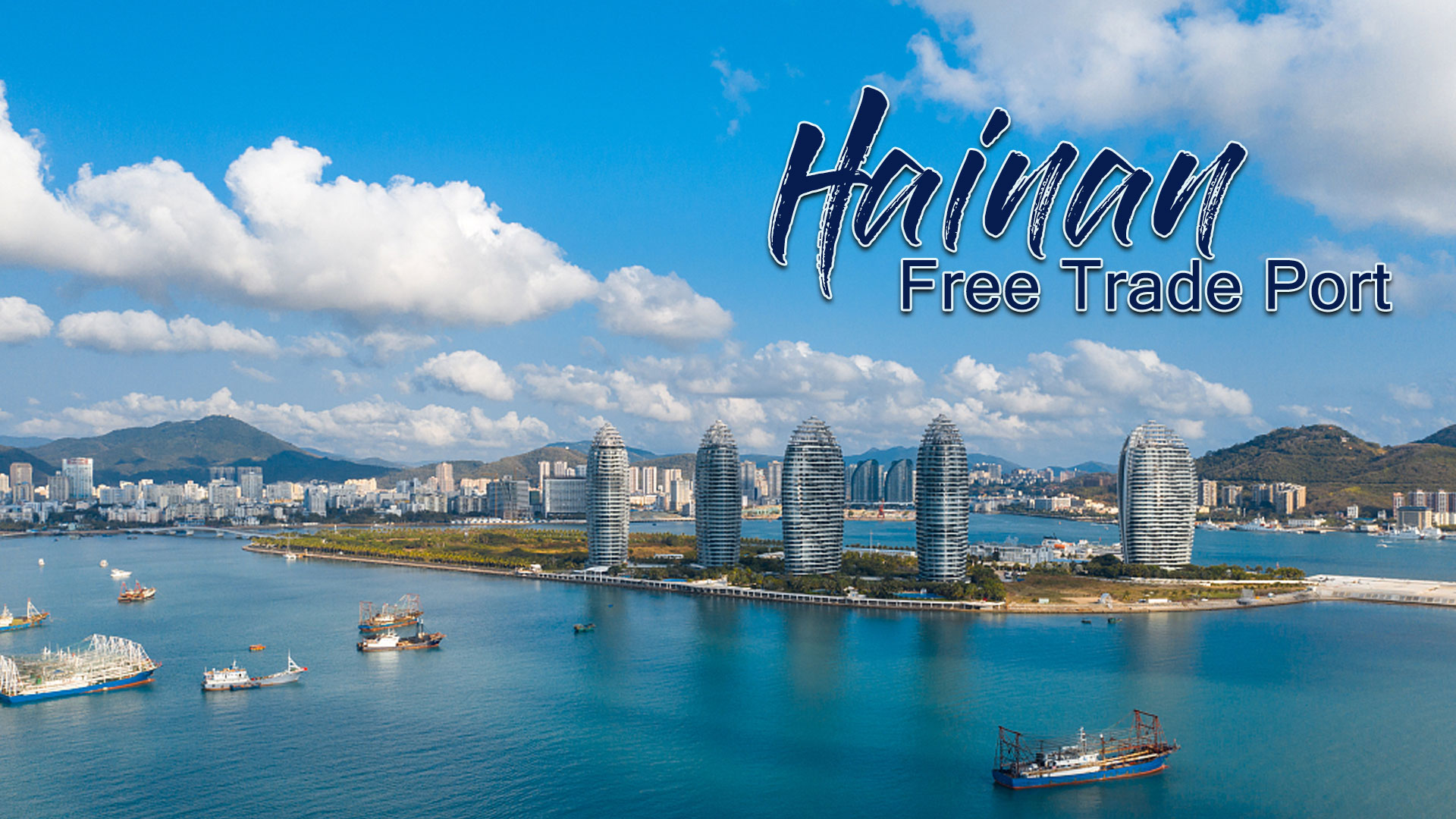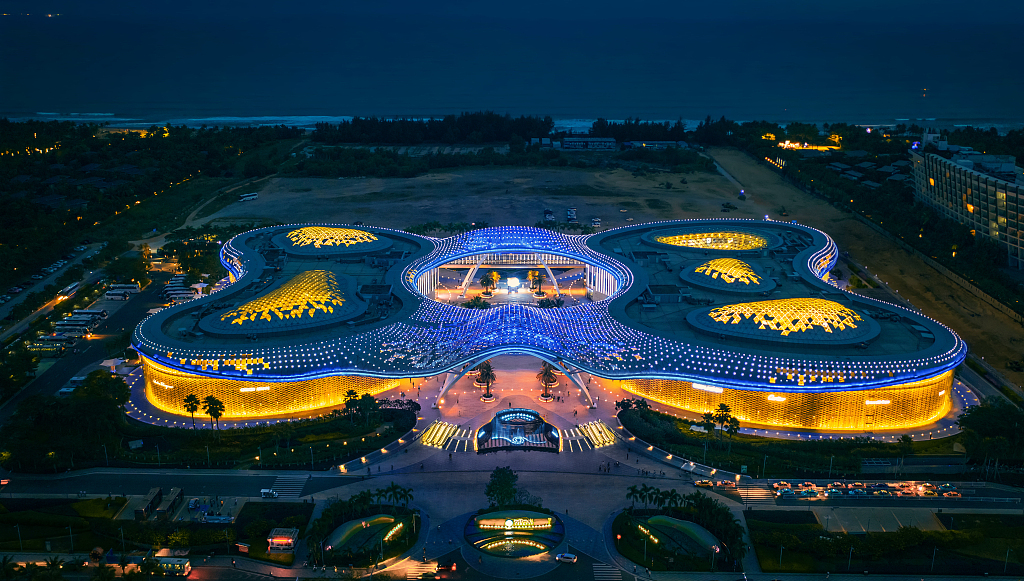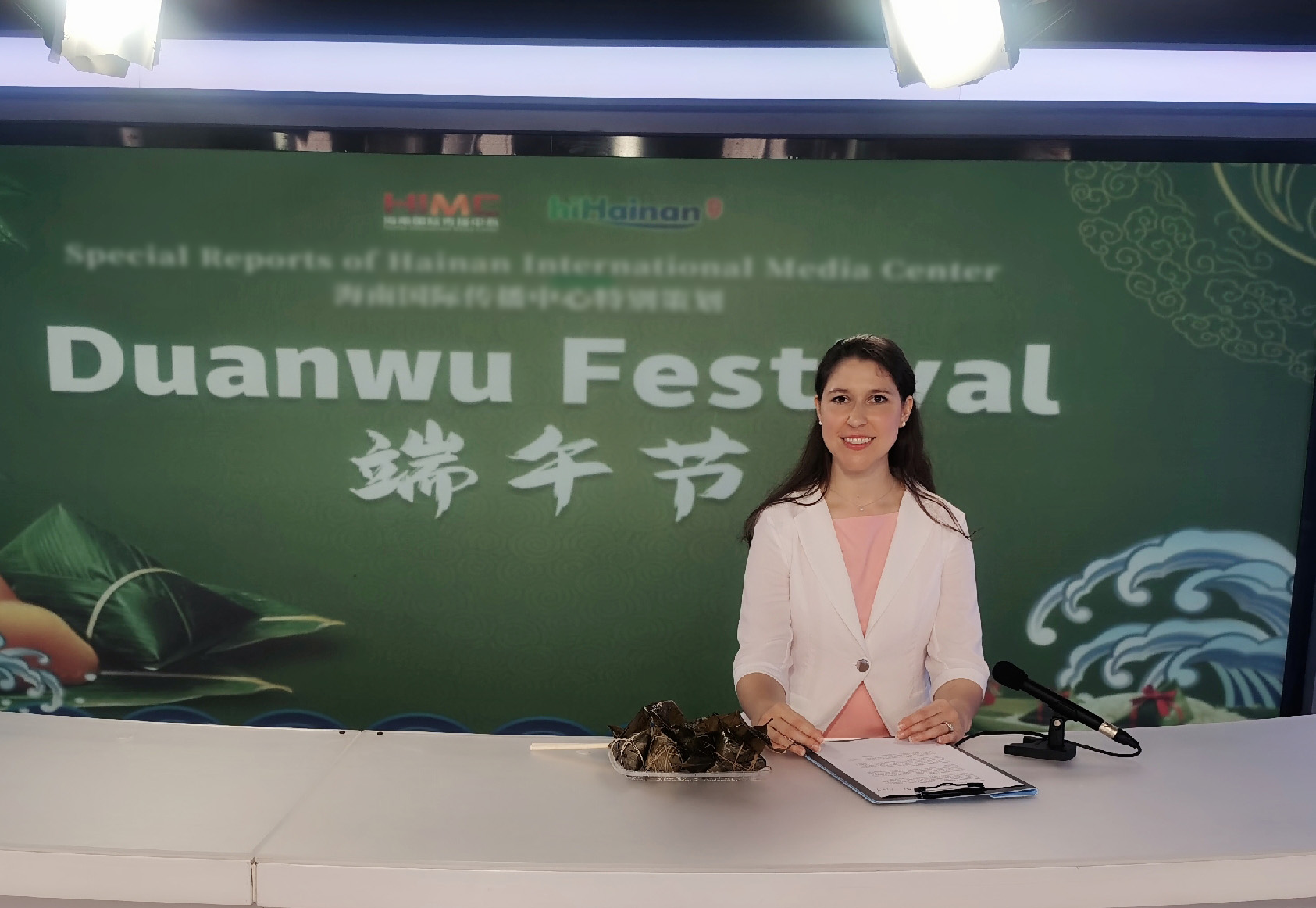
The COVID-19 pandemic has devastated the tourism and retail sectors, as much of the world stayed home and airplanes sat idly for months. But in south China's Hainan Free Trade Port (FTP), duty-free stores are ready to bring back the big-spending bargain hunters with the island positioned as an international tourism and consumption destination.
Despite being the country's largest special economic zone since 1988, the southern island province, home to more than nine million people with an area of 35,000 square kilometers (13,500 square miles), is better known for its tropical beach resorts and in recent years, real estate.
In April 2018, China's leadership announced that the country will support the development of an island-wide free trade zone in Hainan with promises of zero-tariff on imported goods, low taxes and relaxed visa procedures for foreigners. The overall plan for a "high-level FTP" with global influence by 2050 was unveiled on June 1.
Among key policies designed to facilitate freer flow of capital and goods cross-border is an independent customs regime on the island. Qualifying goods and items entering China through the FTP will be exempt from import duties, VAT and consumption tax.
This will vastly expand the availability of international brands and bring cheaper imported goods closer to home for Chinese consumers.
In a push to reinvigorate consumer spending, the government has raised the purchasing allowance for duty-free items to 100,000 yuan per person, more than tripling the 30,000 yuan allowed since 2018. The list of offshore duty-free product categories will also be expanded by early July.
"In short, China wants to share the benefits of the Hainan Free Trade Port with the rest of the world and make Hainan feel like heaven for shopping," said Ruslan Tulenov, supervisor at Hainan Provincial Bureau of International Economic Development.

Aerial view of Haitang Bay duty-free shopping complex in Sanya, Hainan Province. /VCG
Aerial view of Haitang Bay duty-free shopping complex in Sanya, Hainan Province. /VCG
One-stop duty-free shopping
While gloomy business sentiments persist, there have been encouraging signs that Hainan's revamp is on track. Despite a plummet in tourism in the first half of 2020, the island's duty-free sales hit 1.9 billion yuan (279 million U.S. dollars) in May, up 147.9 percent from the previous year.
The Sanya International Duty Free Shopping Complex, operated by China Duty Free Group (CDFG), reported record one-day online sales during a May promotion.
In addition to the existing outlets at the island's two international airports, two new department stores opened last year to cater to domestic consumers, while the world's largest duty-free mall is under construction in the provincial capital Haikou.
As China reopened its economy, this year's Labor Day holiday saw returning domestic tourists spend 28 million U.S. dollars in Hainan's duty-free shops, far exceeding expectations, according to Charles Chen, president of CDFG.
"It is a very encouraging result and signal to us. Offshore duty-free has become a popular choice for Hainan tourists, whose purchasing power remains strong," Chen said. "They also bring us great confidence for the future."
In recently released guidelines, the provincial government set the annual duty-free sales target at 30 billion yuan (400 million U.S. dollars).
Nevertheless, the coronavirus epidemic's impact has been felt by all those in travel-related industries. During the peak of China's outbreak, over 130 duty-free stores in the country were closed, according to Chen. Around half have reopened since then, but those located at the airports remain closed, he said.
"The problem we have is that there are not enough passengers," said Chen, who noted that the return of air traffic will depend on how the virus can be contained outside of China.
Hainan FTP welcomes foreigners
The recovery of international travel is in line with the plan to keep Hainan wide-open to the world.
To make the new FTP a welcoming place for non-Chinese, the government is looking to introduce a relaxed visa policy for foreign professionals and visitors, including easier applications for visa-free entry and a potential waiver for foreign tourist groups and cruise passengers.
Many foreign nationals who came to the island for the tropical scenery and balmy weather, have stayed for the opportunities and also hospitality of the locals.
Sarah Sinskie, an American who has lived in Hainan with her husband for four years, now works as a presenter for the state-run Hainan International Media Center. She told CGTN she was impressed by the friendly atmosphere and the beautiful environment there. "It's a wonderful place for my kids to grow up," she said.

Sarah Sinskie, an American living in Hainan, works as a presenter for Hainan International Media Center. /Courtesy of Sinskie
Sarah Sinskie, an American living in Hainan, works as a presenter for Hainan International Media Center. /Courtesy of Sinskie
Sinskie said that it is easy to find work in Hainan as a foreigner, particularly in the teaching field. "Hainan is definitely a welcoming place for foreigners to live and work, especially when we respect the culture and seek to learn the language. People are friendly and always ready to help us," she said.
According to the government's plan, both public and private sectors, along with state-owned enterprises, will offer some 470 high-paying positions for "international talents," mainly in aviation, hotel management and foreign language teaching.
Read more:
Hainan Free Trade Port, China's ambitious step towards further opening up
(Cover photo by Qu Bo)